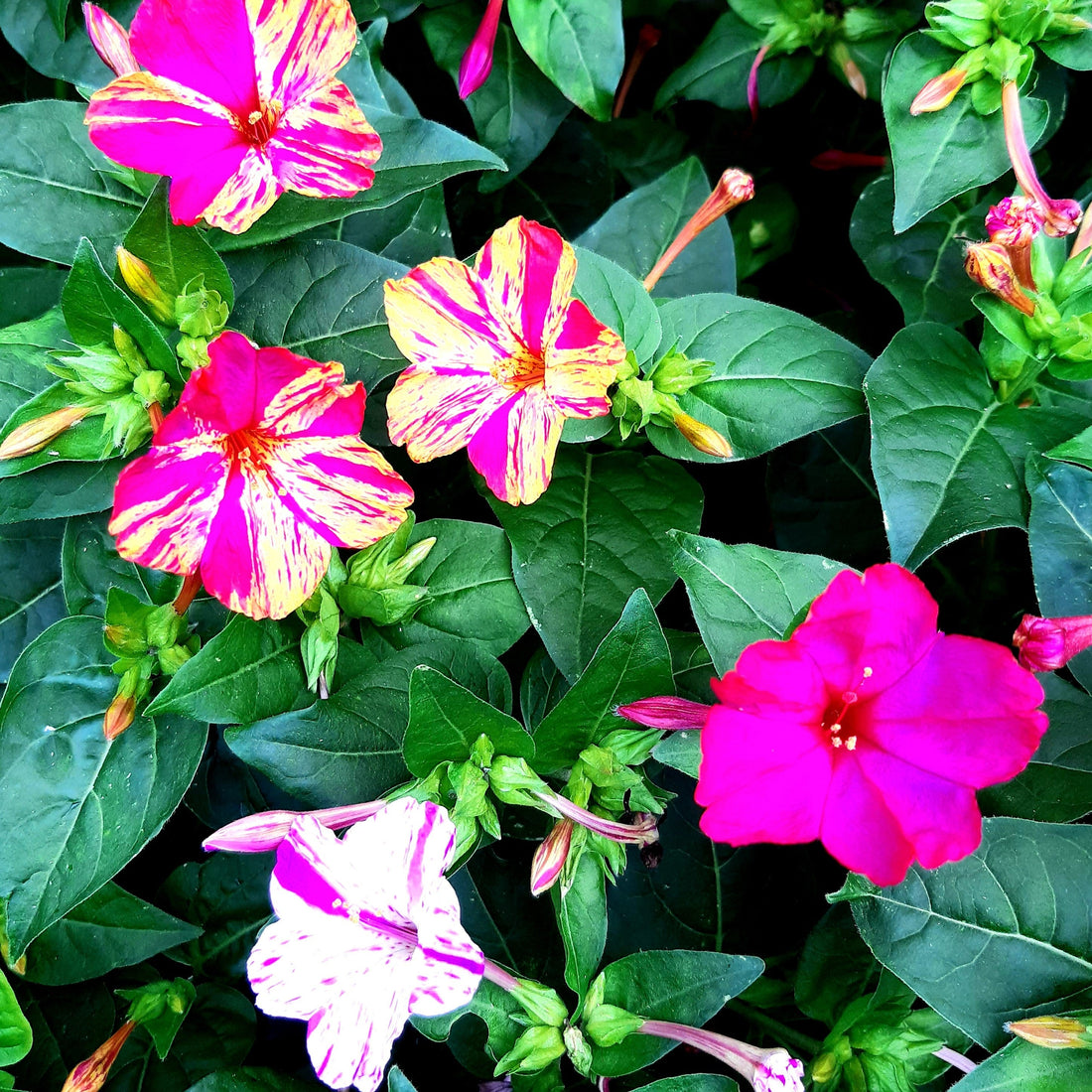
The Marvel of Peru, the Four O'clock Flower
Share

Mirabilis jalapa, the Marvel of Peru, as both its botanical and its common name suggest, is a native flower of South and Central America that was first cultivated by the Aztecs. Introduced into Europe in 1525, it was one of the earliest plants to be brought back from the New World by the Spanish. Why was it called 'mirabilis', or 'marvel'? Well, how many other plants do you know that can naturally grow different coloured flowers on the same bush?
It earned its other common name, the 'four o'clock', in the West Indies, due to the fact that the flowers would stay closed during the day, refusing to open until four o'clock in the afternoon when the heat of the day had passed.
As a child, my first awareness of this amazing flower was while we were living on an atoll in the middle of the Pacific, where the four o'clock was locally known as te aoa aua. Although not native to that part of the world, it had well established itself in the culture of the island, being one of a small number of species that could comfortably survive the extreme conditions of a nutrient-poor, highly alkaline coral soil in the hottest part of the Pacific Ocean. There, the plant was valued as an ornamental, and its kaleidoscope of iridescent colours had long rendered it the preferred choice for the floral garlands used in traditional Gilbertese dance.
That brings us to another 'marvel'. Years later, I obtained some seeds and grew this flower in Ballarat, discovering that not only did it also survive in this climate, but it thrived. Here, however, it grew quite differently to its evergreen constancy on the equator. After dying back completely in autumn with the first frost, it dutifully remained dormant until after the last frost before springing back to life with twice the vigour of its first year. Thus, in our garden we consider this plant a tender perennial.
In many warmer climates this plant is apt to be invasive, and in some parts of the world, including Queensland and parts of New South Wales, is considered a weed. But this is not the case in the cooler climate of Victoria, where the four o'clock is far removed from its natural tropical environment and is therefore rather more restrained in its reproductive habits. We also find that in our southern summer with its longer days than the tropics, not to mention daylight-saving time, the flowers seem to enjoy more of a sleep-in and don't open until seven or eight o'clock in the evening.
Mirabilis jalapa has been with us in Australia for a long time. It was recorded growing in both Victorian and South Australian gardens within the first decade of European settlement. At the bottom of the world, five years before there was even a British settlement in Victoria, Mrs Woods was advertising the sale of Marvel of Peru seeds in the Hobart Town Courier as early as 1829.
Like the early Tasmanians before us, we Victorians, to this day, have also often been caught stubbornly trying to grow all sorts of tropical plants in our temperate climate, not just as house plants but even outside, and even in the ground! This is one plant that will forgive us for doing so. It is the happiest tropical plant in our garden, and evokes memories of coral reefs, swaying palms, and the distant sound of island song. Why not try a piece of paradise in your own garden?

1 comment
“Another world was searched, through oceans new,
To find the Marvel of Peru.”
The Mower Against Gardens. Andrew Marvell, probably 1650-1660
He first enclosed within the gardens square
A dead and standing pool of air,
And a more luscious earth for them did knead,
Which stupified them while it fed.
The pink grew then as double as his mind;
The nutriment did change the kind.
With strange perfumes he did the roses taint,
And flowers themselves were taught to paint.
The tulip, white, did for complexion seek,
And learned to interline its cheek:
Its onion root they then so high did hold,
That one was for a meadow sold.
Another world was searched, through oceans new,
To find the Marvel of Peru.
And yet these rarities might be allowed
To man, that sovereign thing and proud,
Had he not dealt between the bark and tree,
Forbidden mixtures there to see.
No plant now knew the stock from which it came;
He grafts upon the wild the tame:
That th’ uncertain and adulterate fruit
Might put the palate in dispute.